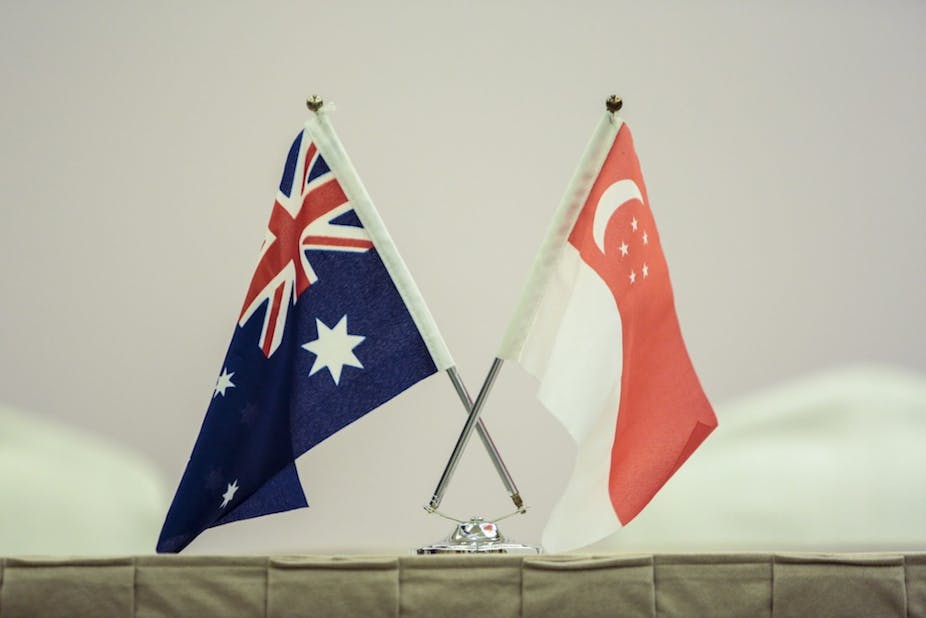The reform of Australia’s federation is under review. In this special series, we ask leading Australian academics to begin a debate on renewing federalism, from tax reform to the broader issues of democracy.
The ANU’s Annmarie Elijah argues why reform of the federation must be international in its focus when it comes to trade.
The terms of reference for the forthcoming federalism White Paper cite Australia’s increasing integration into the global economy as a key reason for ensuring that the federation works. One of the stated objectives is to support Australia’s economic growth and international competitiveness. Yet the debate so far seems to focus on domestic issues, rather than international ones. This is understandable, given the sensitivities over fiscal issues and the division of roles and responsibilities. But there are dangers here if the international dimension is entirely overlooked.
The proliferation of ambitious bilateral and mega-regional trade deals across the globe has widened the trade policy agenda. Trade policy experts talk of liberalising “behind borders” in the new deals. Essentially this means that negotiations are not just about reducing tariffs or quotas, but rather tackling barriers to trade which are embedded in domestic policy. Governments increasingly sign deals which intrude on domestic politics and sub-national governments.
The politics of this cuts both ways. Trade agreements have implications for Australian states and territories, and the peculiarities of the federation impact on – even constrain – Australia’s international commitments. This is not new. The program of economic cooperation between Australia and New Zealand since 1983 and the Singapore – Australian Free Trade Agreement (2003) are just two examples where extensive cooperation between the Commonwealth and states and territories was required.
In the case of mutual recognition of goods and occupations with New Zealand, the international agreement was preceded by a similar commitment among the states and territories. Resolving outstanding issues has been a long-haul process in train since the mid-1990s. All evidence suggests that the internal reforms were every bit as difficult as the international commitment.
The trend for ambitious, broad-ranging trade agreements is likely to continue. As agreements stray further “behind borders” and accumulate diverse chapters covering issues such as services, competition policy and education cooperation, we can reasonably expect substantive implications for the federation. The recently completed Comprehensive Economic Trade Agreement between Canada and the European Union (not yet available in full) is a case in point.
It includes, for example, broad coverage on government procurement at federal, provincial and territory levels in Canada. The agreement even allows for the provinces to be represented in relevant negotiations. If Australia was to embark on trade negotiations with the EU there will be similar expectations. In the context of the new trade deals, the federation will matter.
The terms of reference for the White Paper have a decentralisation bias. Consideration is being given to “limiting Commonwealth policies and funding to core national interest matters”, and applying the subsidiarity principle, defined as allocating responsibility at the “lowest level of government possible”.
Yet international commitments on trade tend to expose the regulatory inconsistencies across the federation in ways that are not always anticipated or politically convenient. In practice, subsidiarity in other contexts (for example the EU) means that responsibilities move both up AND down. Commitments in trade deals such as cross-border recognition of occupations may build the case for centralisation, not the reverse.
The terms of reference correctly marries Australia’s integration into the global economy with domestic – in this case federal – reform. It acknowledges that there may be cases where a “national approach” is preferable to diversity across jurisdictions.
For trade policy purposes this is promising. It represents an opportunity to iron out some of the “system friction” which impedes trade inside the federation and complicates international deals. Even so, as the White Paper process gets underway and domestic arguments take centre-stage, the Taskforce will need to have an eye on international developments. Any rethink of responsibilities will have an international dimension. And the question of how the federation fits into evolving architectures of regional and global economic governance grows more complicated.
Renewing Federalism is in partnership with the Australian National University’s Tax and Transfer Policy Institute at the Crawford School of Public Policy and with the University of Melbourne School of Government.
Our Renewing Federalism series will culminate in a symposium on October 2 at ANU. If you would like to attend the event, please see event details and RSVP here.
Read more in the series here.

